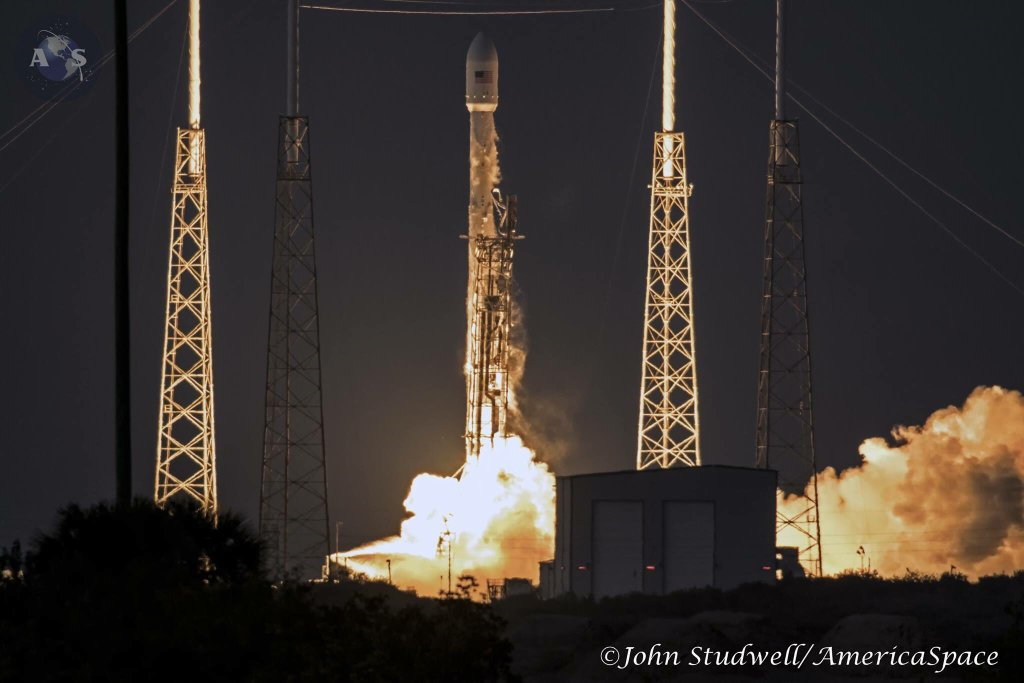
It was fifth time lucky for SpaceX tonight (Friday, 4 March), as the Hawthorne, Calif.-based launch services company successfully delivered its second Upgraded Falcon 9 booster into orbit from Space Launch Complex (SLC)-40 at Cape Canaveral Air Force Station, Fla. Liftoff occurred at 6:35 p.m. EST Friday, just a few minutes after local sunset. Repeatedly thwarted on four occasions last week, due to a combination of deteriorating weather conditions and problems with loading the “densified” cryogenic oxygen aboard the vehicle, this mission was a particularly ambitious one. Aboard the vehicle was the 11,750-pound (5,330 kg) SES-9 communications satellite—the largest commercial payload ever launched by SpaceX—which was delivered into a 22,370-mile (36,000 km) Geostationary Transfer Orbit (GTO). A smooth countdown on Sunday was punctuated by a Range issue, associated with a boat entering the launch danger area, then dramatically aborted at T-0, after the start-up of the nine Merlin 1D+ first-stage engines. More recently, on Tuesday, the attempt was scrubbed several hours before T-0, due to unacceptable high-level winds.
Attempt 1: Wednesday, 24 February
As outlined in AmericaSpace’s SES-9 preview article, a satisfactory Static Test Fire of the nine Merlin 1D+ engines of the Upgraded Falcon 9 first stage was conducted at SLC-40 on the evening of Monday, 22 February. “Full-duration static fire completed,” SpaceX tweeted. “Targeting Wednesday for launch of SES-9 satellite.” Meteorological conditions for the opening attempt, according to the 45th Weather Squadron at Patrick Air Force Base in its Launch Operations Forecast, issued at 11:30 a.m. Wednesday, remained around the 60-percent-favorable mark.
“The strong surface cold front is currently pushing through Central Florida and should be clear of the Space Coast by early afternoon,” it was noted. “Some clouds may linger longer than the rain and winds will remain gusty. The main weather threats for launch are gusty surface winds and thick clouds during the launch window.” However, the 45th stressed that, in the event of a 24-hour scrub to Thursday, conditions would improve slightly to 80-percent-favorable, with the cumulus and thick cloud risks no longer considered a factor, but strong winds still posing a threat.
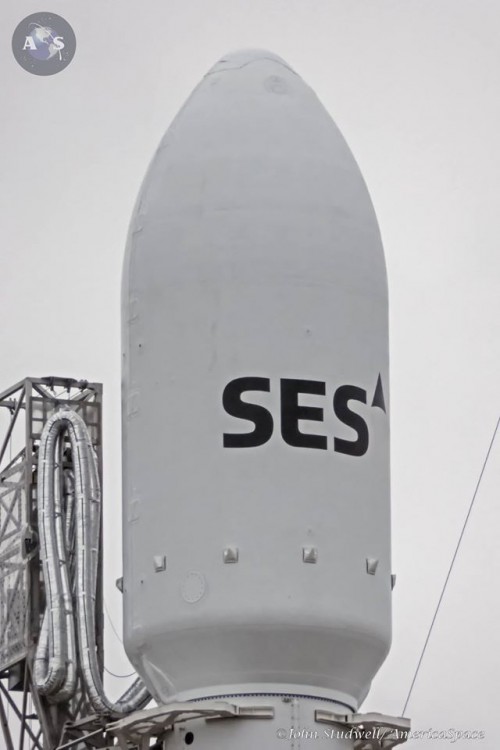
In the meantime, the Autonomous Spaceport Drone Ship (ASDS), nicknamed “Of Course I Still Love You”, was towed out of Port of Jacksonville on Friday, 19 February, by the Elsbeth III tug. It reached a position about 410 miles (660 km) to the east of the Cape, where it would support the “experimental” landing of the Upgraded Falcon 9’s first-stage hardware. As highlighted in AmericaSpace’s preview article, SES-9 is a high-priority payload, having already been delayed since September 2015, following the catastrophic loss of a Falcon 9 v1.1 booster during first-stage flight a few months earlier.
When it attains operational status at 108.2 degrees East longitude, it is expected to help “drive growth” for SES on television channels in Asia and Latin America, as well as representing the company’s largest-ever satellite for Asia-Pacific communications traffic. Since the 11,750-pound (5,330 kg) satellite is thought to be near the edge of the Upgraded Falcon 9’s payload envelope for a GTO mission, it was originally intended that SES-9 would be inserted into a “sub-GTO” orbit. The satellite would then employ its own chemical thrusters and electric propulsion system to attain its correct orbital slot over several months. However, in light of SES-9’s importance, SpaceX offered “a mission modification” to reduce the amount of time needed to reach its operational location.
This modification would create a more challenging re-entry environment for the Upgraded Falcon 9’s first stage, as well as impacting propellant reserves which might otherwise have been devoted to the first-stage landing task. Under nominal circumstances, a returning first stage performs the boost-back burn to adjust its impact point, before flipping itself over by means of nitrogen thrusters, after which a supersonic retro-propulsion burn slows it to about 560 mph (900 km/h). A final landing burn reduces this velocity still further to 4.5 mph (7.2 km/h), allowing the first stage to touch down on four extendable landing legs. “Given the limited propellant reserve at separation,” explained Spaceflight101, “[it] will not be able to conduct a significant boost-back [burn].” With a limited boost-back burn, SpaceX was careful to stress that the first stage would “attempt an experimental landing”, but that “given this mission’s unique GTO profile, a successful landing is not expected”.
Notwithstanding Wednesday’s iffy weather outlook, the Upgraded Falcon 9—which stands 229 feet (70 meters) in height, about 5.6 feet (1.6 meters) taller than its predecessor, the Falcon 9 v1.1—was standing vertical against gloomy skies on Wednesday morning. Liftoff was scheduled to occur during a relatively spacious, 97-minute “window”, timed to open at 6:46 p.m., about a half-hour after local sunset, and close at 8:23 p.m. Unlike the earlier v1.1, the Upgraded Falcon 9 benefits from a 33-percent performance hike, effected through various structural enhancements to the vehicle’s airframe, as well as “densifying” and thereby increasing the liquid oxygen load. Whereas v1.1 countdown operations typically saw the onset of propellant loading several hours in advance of T-0, the Upgraded Falcon 9 has a new fueling regime, which kicks off a mere 35 minutes before launch, and sees the cryogens chilled far closer to their freezing point than on v1.1 missions.
As Wednesday afternoon wore on, no technical issues were being worked with either the booster or the 11,750-pound (5,330 kg) SES-9 satellite, which was encapsulated within its bulbous, two-piece Payload Fairing (PLF) at the top of the stack. “The only concern now is the weather, where strong ground winds are being experienced,” noted AmericaSpace’s Launch Tracker at 5:09 p.m. EST. “The weather chances remain at 60-percent “Go”, with ground winds and thick clouds being the primary concerns.”
The countdown proceeded, seemingly without incident, but shortly before the onset of fueling a scrub and 24-hour turnaround was called. “Team opting to hold launch for today,” SpaceX tweeted at 6:15 p.m. “Looking to try again tomorrow; window also opens at 6:46 p.m. Rocket and spacecraft remain healthy.” It was later explained that “out of an abundance of caution”, the launch team opted to hold the launch “to ensure liquid oxygen temperatures are as cold as possible in an effort to maximize performance of the vehicle”.
Attempt 2: Thursday, 25 February
Heading into the second launch attempt, SpaceX tweeted on the afternoon of Thursday, 25 February that weather conditions had improved to 80-percent favorable, “though upper-level winds and ground-level winds remain watch items”. In fact, the Liftoff Winds element of the Launch Commit Criteria (LCC) was top of the list of potential violations on Thursday. “Sunny skies will prevail as brisk ground winds bring much colder air to the Space Coast,” the 45th Weather Squadron explained. “Winds will decrease near sunset as high pressure builds in making the primary weather concern strong ground winds remaining through the launch window”. All told, these westerly-blowing winds were expected to reach a peak of 125 knots, near 42,000 feet (12,800 meters). Hedging its bets against a possible second scrub, the outlook for Friday—which was anticipated to show a 95-percent likelihood of satisfactory weather—foresaw “virtually clear” skies and “further diminishing ground winds”, with maximum upper-level winds peaking at 115 knots at 35,000 feet (10,670 meters).
With the opening of Thursday’s window planned for 6:46:17 p.m., the countdown passed with characteristic smoothness. This time, however, the launch team was polled by the Launch Conductor for its “Go/No-Go” state of readiness to begin fueling the Upgraded Falcon 9. “The launch teams have given the green light for tanking operations,” AmericaSpace’s Launch Tracker noted at 6:14 p.m., “which will start in about 2 minutes.” All told, around 1.1 million pounds (500,000 kg) of liquid oxygen and rocket-grade kerosene (known as “RP-1”) were loaded into the booster’s tanks to power the nine Merlin 1D+ first-stage engines and the single restartable Merlin 1D+ Vacuum engine of the second stage. The latter was tasked with executing a pair of burns to deliver the heavyweight SES-9 to geostationary altitude.
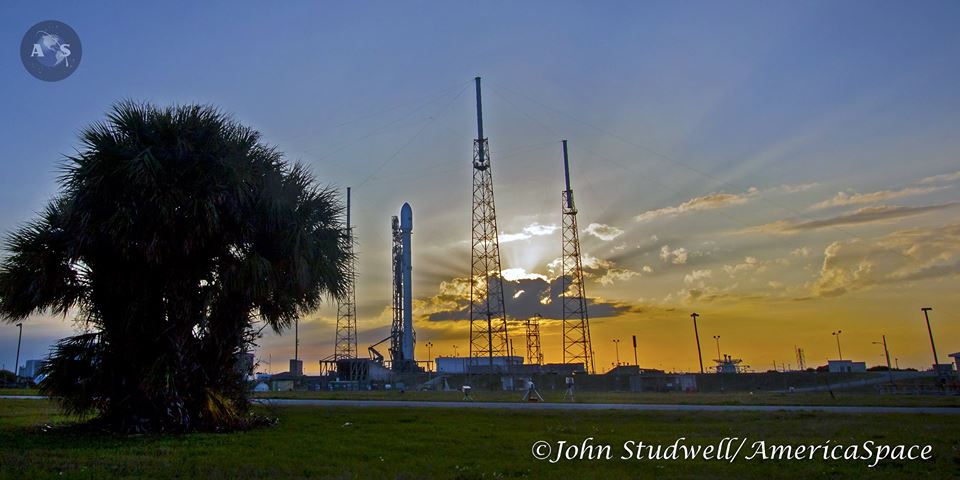
As fueling neared its conclusion, the countdown reached its final “Go/No-Go” polling point of all stations at T-13 minutes. By this point, the preferred T-0 time had been slightly realigned to 6:47 p.m. During this period, the Merlin 1D+ engines were chilled, ahead of their ignition sequence, in order to ensure no sudden changes in temperature when the liquid oxygen began to flow into the combustion chambers. All external power utilities from the Ground Support Equipment (GSE) were disconnected from the stack and the SES-9 payload was placed onto internal power at 6:40 p.m. and at T-5 minutes the roughly 90-second-long process of retracting the “strongback” from the vehicle got underway. The Flight Termination System (FTS)—tasked with destroying the vehicle in the event of a major accident during ascent—was placed onto internal power and armed. Fueling will then conclude and the first stage’s propellant tanks will attain their proper flight pressures.
All at once, at T-1 minute and 41 seconds, “Hold! Hold! Hold!” echoed across the countdown net, as the clock was abruptly halted and steps were taken to safe the booster and raise the strongback into position. “The hold was called as the propellant had not been fully loaded,” AmericaSpace’s Launch Tracker explained in the moments after the scrub. “There was insufficient time left in the window to reset the clock and have another attempt.” Falcon 9 Product Director John Insprucker noted that the incomplete state of cryogenic loading and the need to remove the propellants from the vehicle, prior to another launch attempt, would have required longer than the available window. As a result, the hold triggered an automatic scrub for the day. Since Thursday was actually the backup opportunity, Mr. Insprucker was not able to immediately share a revised date, although he did allude to a possible third attempt in a couple of days’ time.
“With no margins for this mission, especially on the second stage that will burn to depletion to deliver SES-9,” explained Spaceflight101 in its post-scrub summary, “SpaceX has to ensure the [liquid oxygen] is loaded at the coldest possible temperature in a compressed tanking sequence to prevent the propellant from warming up.” Cryogenic oxygen’s liquid state exists within a range from 221.54 degrees Celsius (-368.77 degrees Fahrenheit) to -182.96 degrees Celsius (-297.33 degrees Fahrenheit). However, in order to achieve densification, the liquid oxygen aboard the Upgraded Falcon 9 is cooled far closer to its freezing point, reaching about -206.66 degrees Celsius (-340 degrees Fahrenheit). This extreme temperature requires the fuel lines to be chilled, ahead of propellant loading, in order to avoid the risk of thermal shocks and fractures.
Attempt 3: Sunday, 28 February
By Friday evening, rumor had surfaced that a third launch attempt would probably occur at some point between the weekend and Thursday, 3 March. Finally, on Saturday, SES announced via its Facebook page that the next effort to get the SES-9 satellite into orbit would occur during a 94-minute “window”, due to open at 6:46:51 p.m. EST on Sunday, 28 February. A backup opportunity was also provided on Monday. In both instances, a T-0 at the start of the window would come about 24 minutes after local sunset, promising to offer a spectacular ascent for onlookers along the Space Coast.
This welcome news was accompanied by an increasingly positive meteorological outlook. On Saturday, the 45th Weather Squadron noted that “a strong surface high-pressure center continues to work its way east, keeping dry air in place over Central Florida” across both days, yielding “very little risk of a weather violation with the clouds”. The 95-percent likelihood of acceptable conditions on Sunday was, however, tempered by an elevated chance of violating the Cumulus Cloud Rule, declining to 90-percent favorable in the event of a scrub to Monday.
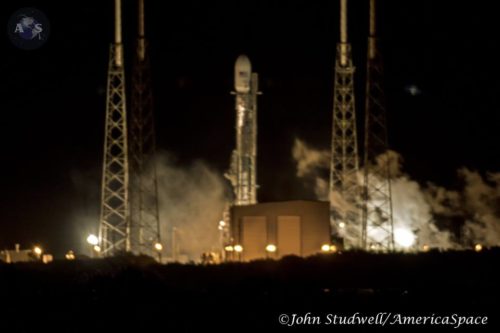
Against the backdrop of this highly favorable forecast, countdown operations commenced early Sunday afternoon, with all SpaceX personnel assuming their consoles. Characteristically, the Hawthorne, Calif.-based launch services provider offered infrequent Twitter updates, informing its audience at 3:17 p.m. EST that it continued to track smoothly towards the opening of the window, but cautioned that it was “watching upper-level winds closely”. Specifically, winds at 35,000 feet (10,670 meters) were expected to reach 115 knots. Passing smoothly through a “Go/No-Go” poll to begin fueling the Upgraded Falcon 9, the loading of propellants aboard the booster began shortly before 6:22 p.m. EST, less than 30 minutes prior to the opening of Sunday’s window.
Shortly thereafter, the vehicle entered its Terminal Count at T-10 minutes. During this period, the nine Merlin 1D+ engines of the first stage were chilled, ahead of their ignition sequence, and the SES-9 payload and the booster itself transitioned from GSE to internal power supplies. By 6:42 p.m., the strongback had been retracted, the FTS was enabled and SpaceX concluded the loading of liquid oxygen and RP-1 propellants. Pressurization then commenced, and was complete by 6:45 p.m., but the clock abruptly stopped at T-1 minute and 33 seconds. This was due to a Range issue, which Mr. Insprucker later identified as a boat having apparently strayed into the launch danger area. “[Air Force] has placed launch on hold due to a boat entering the edge of the keep-out zone,” tweeted SpaceX CEO Elon Musk a few minutes later. “Scrambling helo to get them to move.”
As SpaceX weighed the options for de-tanking and re-tanking the Upgraded Falcon 9, the countdown clock was recycled to T-10 minutes and 42 seconds and held at that point, before being extended further to T-11 minutes and 20 seconds. This was followed by confirmation from Mr. Insprucker that a revised T-0 had been set for 7:21 p.m. EST. “Countdown continuing,” SpaceX tweeted at 7:12 p.m. “Liftoff pending ship clearing keep-out zone.” and the clock continued counting, pending resolution of the Range issue.
At length, a “Range Green” call was received at T-2 minutes and the Launch Director issued a definitive “Go for Launch”. The Merlin 1D+ engines were purged with gaseous nitrogen, and, at T-60 seconds, the SLC-40 complex’s “Niagara” deluge system of 53 nozzles were activated, flooding the pad surface and flame trench with 30,000 gallons (113,500 liters) of water per minute to suppress acoustic energy radiating from the engine exhausts. At T-3 seconds, the Merlin 1D+ engines roared to life, aiming to ramp up to a combined thrust of 1.5 million pounds (680,000 kg). A series of computer-controlled health checks followed, pending the liftoff command at T-0, which did not occur.
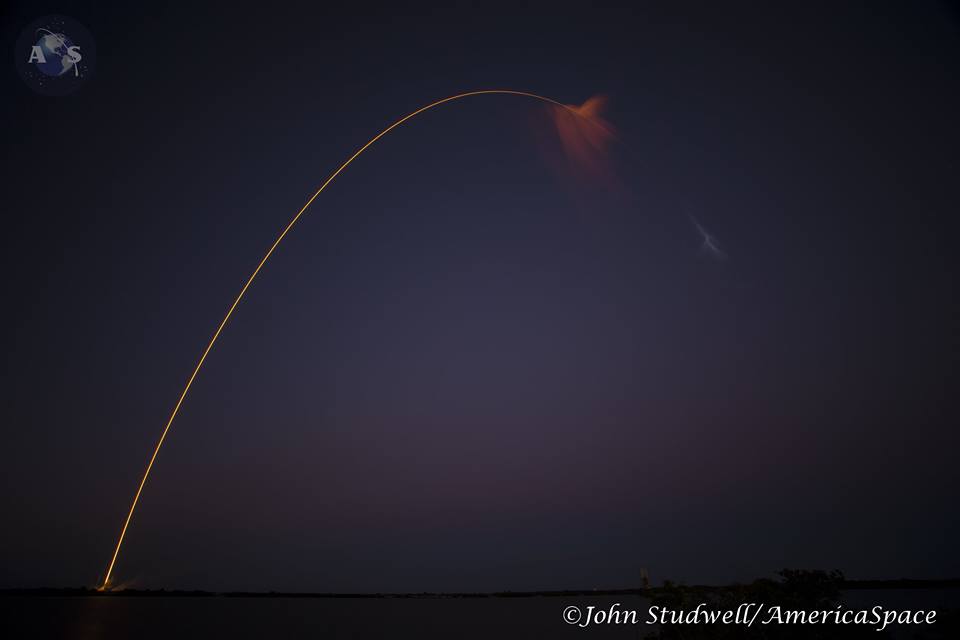
It appeared that a problem was detected during the engine-start sequence, resulting in a shutdown of the nine Merlins. “The launch abort was most likely called by the monitoring of engine performance that is checked against expected performance criteria and shut down the launch,” AmericaSpace’s Launch Tracker explained. In the next few minutes, as a flurry of urgent communications passed across the countdown net, the strongback was re-erected, the FTS was disarmed and the booster was placed back onto external power. It was confirmed fully “safed” by 7:28 p.m.
Shortly thereafter, SpaceX tweeted that Sunday’s attempt had not yet been scrubbed, with “Update pending from launch team after data review”. However, it was not to be. At 7:34 p.m., Mr. Musk tweeted “Launch aborted on low thrust alarm”, adding that “Rising oxygen temps due to hold for boat and helium bubble triggered alarm”. It was explained by Mr. Insprucker that both the Upgraded Falcon 9 and its precious SES-9 payload were in a safe and healthy configuration, but that—despite having Monday, 29 February nominally approved by the Range as a backup day—no decision was being taken on when another launch attempt might occur. Only after lengthy examination of the data pertaining to Sunday’s abort would a forward plan and decision be made.
Attempts 4 and 5: Tuesday, 1 March and Friday, 4 March
However, by Monday, the 45th Weather Squadron issued a revised forecast, covering the three days from 1-3 March, with a launch window due to open at 6:47 p.m. and close at 8:27 p.m. EST. “The implication from this,” noted our Launch Tracker, “is that the Range has been reserved for a launch attempt with 24- and 48-hour backup options.” In these cases, the meteorological outlook at the Cape was expected to be 80-percent favorable, with key concerns centering upon the threat of Cumulus Clouds and the possibility of violating the Thick Cloud Rule.
On Tuesday afternoon, SpaceX declared its readiness to support a fourth attempt to get the SES-9 payload into space. The company confirmed that a truncated launch window, extending from 6:35 through 7:05 p.m. EST—moved slightly forward to avoid high-level winds associated with a weather front moving through the Cape Canaveral area—was being targeted. However, Tuesday’s attempt did not get close to tanking the Upgraded Falcon 9, so harsh were the upper-level winds. At 3:48 p.m., Mr. Musk tweeted: “Pushing launch to Friday, due to extreme high-altitude wind shear. Hits like a sledgehammer when going up supersonic.”
Early Friday, SpaceX confirmed that a fifth attempt would be made during a 90-minute window, opening at 6:35 p.m. and closing at 8:05 p.m. EST. Having now scrubbed on four occasions, this brought back unpleasant memories of another long-delayed SpaceX mission, the effort to deliver six Orbcomm Generation-2 (OG-2) satellites into low-Earth orbit, back in summer 2014. According to the 45th Weather Squadron in a forecast released the previous evening, conditions were expected to offer a 90-percent likelihood of acceptable conditions for a primary attempt on Friday and a backup attempt on Saturday. That said, violating the Cumulus Cloud Rule was at the top of the risk list. “Warm temperatures and cloudy skies are the name of the game across Central Florida,” it was noted. A weak frontal boundary, due to approach the Space Coast by noon on Friday was expected to bring “gusty northwest surface winds, which will weaken after sunset”, with clear skies offering “only a slight weather concern of lingering Cumulus Clouds”. Maximum upper-level winds, too, were expected to be significantly diminished, from 140 knots last week to around 100 knots at 37,000 feet (11,200 meters) on Friday and around 70 knots at 40,000 feet (12,200 meters) on Saturday.
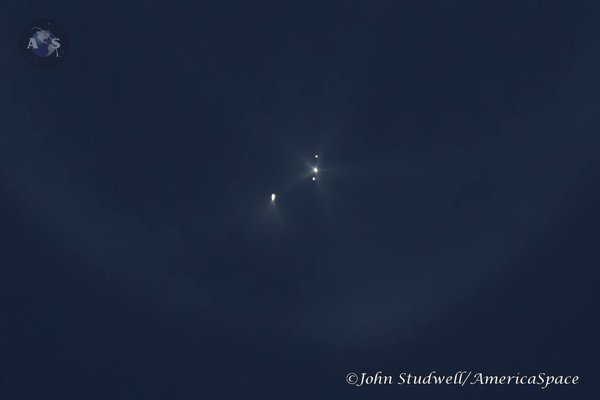
In keeping with previous launch attempts, the countdown net remained relatively quiet until the final half-hour before launch, when super-cooled cryogenic oxygen and RP-1 began to be loaded into the Upgraded Falcon 9’s tanks. Loading operations got underway at about 6:12 p.m. EST and at T-10 minutes, following the customary series of “Go/No-Go” polls by the Launch Conductor, the clock entered the Terminal Count. The prevalves of the nine Merlin 1D+ engines were opened to kick off their chill-down, ahead of ignition. For the fifth time, the SES-9 payload and the vehicle itself transitioned to internal power and the strongback was retracted.
With 85 seconds to go, the Launch Director verified “Go for Launch”. Shortly thereafter, the Upgraded Falcon 9 entered “Startup”, with all flight computers now in primary control of all critical functions. At T-3 seconds—for the second time in a week—the nine Merlin 1D+ engines roared to life, ramping up to full power. This time, all was well. At 6:35 p.m. EST, right on the opening of Friday’s launch window, the mission which had seemingly become “Mission Impossible” finally rocketed away from SLC-40, about ten minutes after local sunset. Immediately after clearing the pad, the Upgraded Falcon 9 executed a combined pitch, roll and yaw program maneuver, establishing itself onto the proper flight azimuth to inject SES-9 into orbit.
Eighty seconds into the uphill climb, the vehicle exceeded the speed of sound and experienced a period of maximum aerodynamic duress—colloquially termed “Max Q”—on its airframe. At about this time, the Merlin 1D+ Vacuum engine of the second stage underwent its own “chill-down” protocol, prior to its pair of burns, later in the ascent. At 6:37:40 p.m., the first stage exhausted its propellant and separated, whereupon the Merlin 1D+ Vacuum engine ignited for the first time. Shortly afterwards, at 6:38:42 p.m., the bulbous Payload Fairing (PLF) was jettisoned, exposing the SES-9 satellite to the space environment for the first time. The first of the second stage’s two burns ran for 7.5 minutes, ending at 6:44 p.m., after which a lengthy “Coast Phase” got underway.
In the meantime, following the separation of the first stage, another mission got underway: the attempt to land its hardware on the deck of the ASDS, “Of Course I Still Love You”, to the east of Cape Canaveral, in the Atlantic Ocean. Due to propellant restrictions, dictated by the GTO destination of the primary payload, the boost-back burn was reduced for this mission, although SpaceX explained at 6:42 p.m. that the “Entry Burn” had successfully concluded. This placed the first stage on course to reach the ASDS, with the “Landing Burn” anticipated at 6:44 p.m., about nine minutes and 14 seconds after liftoff.
Agonizingly, although a few frames of video were returned from the ASDS, revealing that the Upgraded Falcon 9 first stage did reach the deck of the drone ship, it was unclear if the landing attempt was wholly successful. This agony was palpable, although this did not detract from the reality that the primary objective of the mission—to deploy SES-9—had been successfully accomplished. “Great launch today,” tweeted veteran International Space Station (ISS) resident Garrett Reisman, who now serves as SpaceX’s Director of Crew Operations. “SES-9 payload deployed.” In response, former shuttle and ISS crew member Mike Lopez-Alegria came back with: “We got to know: Did it or didn’t it?” This was met by a response from Dr. Reisman a few minutes later: “My magic 8-ball says…outlook hazy!” Ominously, little mention was made about the fate of the first stage in SpaceX’s subsequent reporting of the second-stage phase of the mission and shortly after 7:00 p.m. it was reported that the landing attempt may not have been successful.
In the meantime, wrapping up its 28-minute Coast Phase, the Merlin 1D+ Vacuum engine roared to life at 7:02 p.m. EST for its second burn. This lasted about 48 seconds. Four minutes later, at 31.5 minutes since departing the Cape, SES-9 was successfully released from the second stage. When it reaches its correct “slot”, the satellite will mark the eighth GTO-bound spacecraft to be launched by SpaceX. “Target altitude of 40,600 km achieved,” tweeted Mr. Musk at 7:20 p.m. “Thanks @SES_Satellites for riding on Falcon 9!”
Be sure to “Like” AmericaSpace on Facebook and follow us on Twitter: @AmericaSpace
Missions » Commercial Space » SES » Missions » Commercial Space » SES » SES-8 » Missions » Commercial Space » SES » SES-9 »



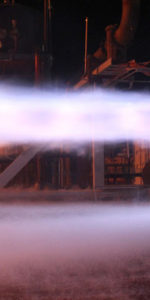
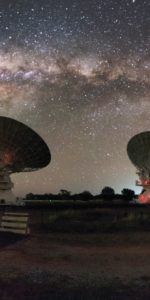
Congratulations SpaceX. Can’t wait for CRS-8.
It appears the landing was unsuccessful.
https://twitter.com/elonmusk?ref_src=twsrc%5Etfw
Anybody got any idea what Musk means by “v hot landing”. I can gather v = very, but why versus other launches of this type?
I believe it’s because they were tight on fuel for retro compared to the less demanding previous missions.
Late change to put SES-9 in a higher dV GTO insertion point to reduce the delay to on-station operations for SES. This meant sep was at a higher dV with less fuel margin than originally planned for this mission (And is less ideal for recover of the first stage).
http://spacenews.com/ses-applauds-spacexs-willingness-to-sacrifice-falcon-9-first-stage-recovery-for-main-satelilte-mission/
Well in fact they still attempted the landing but with more aggressive final burn. New landing profile meant could not bleed off so much energy on the reentry burn and try to make up the difference on a very hot multi-engine hover-slam attempt. That old landing simulator trick, most prop efficient to break at the end.
https://twitter.com/NASASpaceflight/status/703000070732566528
Thanks for the links.
“The goal is to reduce by a month or more the time it would otherwise take SES-9 to begin generating revenue.”
Another interesting issue in the reusability debate.
Assuming SpaceX can ever make reuse of the Falcon 9 first stage reusable, how much would they be able to reduce the launch cost to the customer and how would that savings compare to the extra months revenue?
Defiantly in the mix. But SES, at least in the past, has been open to reuse at the right price; and has since re-iterated this. The change came on top of the one month delay while working the MVAC issue, which of course chased the 6 month delay from CRS-7. But even as late as the beginning of the year SES was go for the lower dV mission. Hard to read the tea leaves but if delays like this stay common over the long haul I think SpaceX has bigger issues than reuse economics. Not terribly surprising given changes to MVAC/Merlin and previously discussed LOX issues early in F9-FT. Those need to be panned out to give schedule confidence to the big boys and then I think the sell on reuse is a bit easier.
http://spacenews.com/spacex-early-adopter-ses-ready-to-reuse-falcon-9-%C2%AD-for-the-right-price/
I also think there is some expectation that over time lower prices will bring more LEO business into the market in one way or another. Like Orbcomm, One Web and other Earth sensing businesses that seem to be making a bit of a resurgence in commercial LEO. This would balance out the mission portfolio with more prime use case for returning the first stage. May not ever pan out, as it didn’t in the late 90s, but I think there is a shot of this happening.
I have seen three numbers for the 1st stage costs, 16, 22, 26 million. If it can be reused 10 times it would be 1.6 – 2.6 million for an amoratized first stage, plus any refurbishment costs.
I believe Musk will be more like a used car salesman with any reused 1st stages and will just wheel and deal for the best price he can sell a used one for.
A valued commodity in the space launch industry is reliability so you may actually have a situation where customers offer to pay MORE for refurbished stages instead of new ones.
If those reused stages can actually be proved to be more reliable
Something that has certainly not been proven as of yet.
You might be getting a bit ahead of yourself.
“so you MAY actually have a situation where customers offer to pay more….”
Learn to read.
Yes as polite and conversational as ever.
Try to cover any way you want, if that is how you want it to now be interpreted; it could as easily read:
“so you MAY NOT actually have a situation where customers offer to pay more….”
That makes the statement meaningless.
Learn to think.
Another bit of this is fairing recovery which is again, never proven (tech or econ) but good to try anyway.
https://www.youtube.com/watch?v=3yuq8nUSdtY&feature=youtu.be&t=299
Not sure anyone saw this but looks like an RCS plume can be seen in this video at 5:28 from one of the fairing halves on SES-9. We know there has been a skunk works operation to recover fairings but no clue how much effort is put into it.
Because it was a ballistic re-entry for the 1st stage unlike previous attempts. SpaceX were always doubtful of this attempted landing due to the mission profile.
They did a slightly super-synchronous mission with a 5,330kg satellite and still managed to get the first stage down to the ASDS. The new Falcon 9 performed admirably, it will surely raise some eyebrows with that GTO performance (I’m wondering now on what it can do on an expendable launch – although SpaceX will probably not market it for one)…
Guys,
So SES says they are ready to try a reuse first stage (with a big discount)…on the next satellite they have to launch …even though SpaceX has not landed a first stage from a GTO launch and Musk is now saying wait hold on here…Is he now trying to curb the enthusiasm ..I see he didn’t post a big explosion of the landing yet…
I wonder if after the first launch of the F9Heavy will people come out and say…Send me Mars….Please I have to get off Earth if Trump becomes President!!!
looks like there is a Market for a cheaper reused booster…Will LM dust off the X-33 program? Didn’t they also plan on using 20years ago that supercooled LOX that SpaceX is now using,… Those engineers that worked on the X-33 have got to be smiling now..
“I see he didn’t post a big explosion of the landing yet…”
Or maybe there’s no video available because the feed cut out.
Great News!!